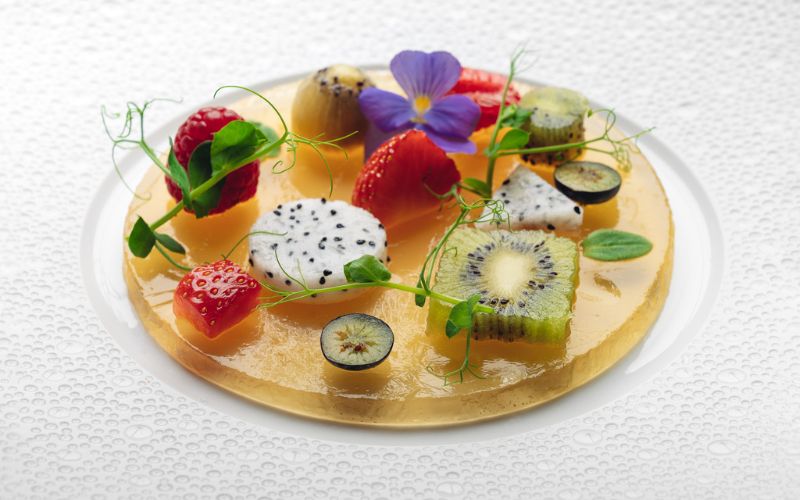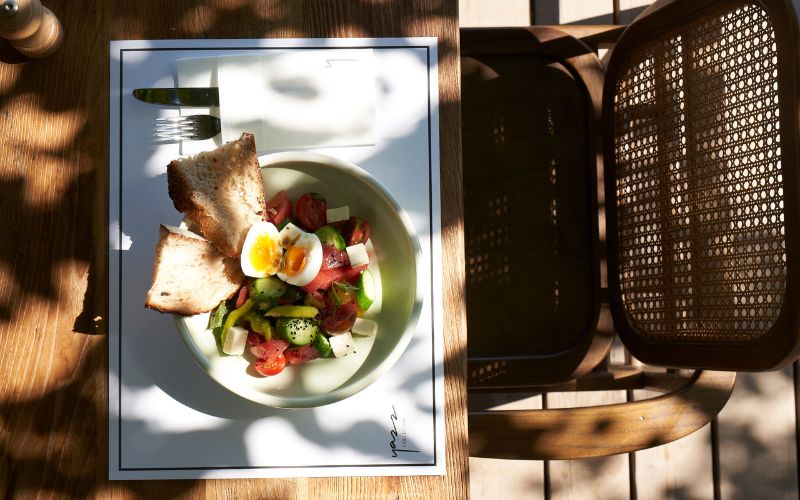The Next 12 Months On A Plate
From booze-free food pairings to marine farming and the cuisines consumers most want to see on restaurant menus, Ben McCormack serves up the tastiest food and drink trends for 2023
Farming the sea
With over half of diners now claiming to follow a flexitarian diet, the quest for the perfect meat-free steak remains the holy grail of food production, but innovators are already turning their attention to other problematic foodstuffs: Parisian start-up Gourmey is developing a cell-based, lab-grown version of foie gras, for instance.
What’s more, carnivores who are increasingly getting their protein fix from fish mean that the case for plant-based seafood – currently an under-developed sector – is becoming ever-more urgent, though with new patents being issued faster than a black marlin, expect to see some tasty results soon.
There is an increasing awareness, too, of the potential of the sea as an alternative to land-based farming. Seaweed and algae have long been used in Japanese cuisine but climate-conscious diners are increasingly embracing kelp as the new global superfood. Not only does kelp farming help absorb carbon in the atmosphere but it can be made into a nutritionally packed alternative to noodles and potato crisps for anyone who finds a raw kelp salad too much like fish food.
Speaking of noodles: expect chefs to become ever more creative in the plant-based pasta department. Forget about spiralising courgette or turning cauliflower into gnocchi. Whole Foods now sells green banana fusilli, cassava spaghetti and hearts of palm linguine. Under no circumstances add a meat-based Bolognese.

Brand values
Immersive dining used to mean eating with a side order of entertainment where the food mirrored the performance; now it is a deep-dive into an overall brand vision in which the design of one’s surroundings and the creations on the plate go beyond simply satisfying hunger to establish a 360-vision of an aspirational lifestyle, with food and drink at its centre.
At the recently opened RH Guesthouse in New York – tagline, ‘this is our house, and you are our guest’ – the Californian home furnishings company complements its half-dozen guest rooms and three suites with a Champagne and Caviar Bar. Six varieties of Petrossian sturgeon eggs can be washed down with Krug Grande Cuvée by the glass as if to say: shop at RH and you can live like this every day.
Of course, hotels have been peddling this sort of brand association for years through high-end food and drink. How much better, then, if a property can move beyond wine and food matches to unlock money-can’t-buy experiences usually only available to the exceptionally well-connected rather than the merely exceptionally wealthy?
Over autumn this year, the Wynn Las Vegas partnered with Napa Valley estate Domain H. William Harlan on a trio of wine dinners priced at $10,000 per person for each of the 20 reservations at each sitting, one of which saw supper served on the 18th hole of Wynn Golf Club (where the green fees alone usually cost $550). The $10k price tag included not only dinners of truffle and Kobe beef matched to the most exclusive vintages from the Harlan cellars but a one-night stay in a newly renovated Wynn Tower suite and membership of the Harlan wine club, thus bypassing waiting lists for the estate’s releases. Now that’s what I call a side order.
Who needs alcohol?
Non-alcoholic alternatives to wines and spirits have been taken increasingly seriously ever since the abstemious millennial generation came of age 15 years ago; now that those same millennials have serious spending power and discerning taste – supermodel Bella Hadid and actress Blake Lively have both launched mocktail brands – switched-on restaurateurs are realising that it’s no longer enough to only offer sparkling water and soft drinks, no matter how “pure”, craft or small-batch.
La Dame de Pic, the two-Michelin-starred London outpost of French chef Anne-Sophie Pic at the Four Seasons Ten Trinity Square, has just announced a non-alcoholic drinks pairing menu called Imprégnation Absolue. Guests are invited to approach the drinks, made from extractions, fermentations and infusions invented at Pic’s laboratory in Valence, as an aromatic accompaniment to the tasting menu. Pic’s fellow London two-star – and number 49 on the World’s 50 Best Restaurants list – the recently relocated Ikoyi, now offers a booze-free tea pairing alongside its tasting menu.
Things needn’t be so complex, however. The michelagua ― essentially a michelada minus the lager – is taking LA and southern California by storm. An agua fresca (fruit mixed with water, sugar and lime juice) replaces the beer; mango, pineapple and spinach are popular variations but the only limit on flavour combinations is the imagination of the bartender, which makes it a drink tailormade for food pairing. Think of it as a refreshing virgin Mary for hot climates.
Social consciousness gets social
Diners have never been more concerned about trust and traceability: 40% seek out brands that guarantee farmers have been treated in an ethical manner, according to the report by food processing giant ADM into 8 Global Trends for 2023. But consumers are equally conscious of the social impact of their food: witness the outrage that followed news this year that foie gras bans would not be introduced in the UK or New York City.

But it is not just the food on the menu that can arouse the ire of socially conscious diners. ADM’s research finds that 30% of global consumers have boycotted a brand because of its ethical credentials and, for Millennials and Gen Z especially, food and drink choices reflect their own beliefs and values. Scottish craft-beer brewer and bar operator BrewDog, for instance, was forced to defend itself on social media when its ‘proud anti-sponsor of the World F*Cup’ ad campaign appeared to fly in the face of screening matches of the controversial Qatar event at its venues.
For make no mistake: restaurants can be a force for good. During the recent US midterm elections, around a dozen restaurants in the Texas state capital of Austin offered free food and discounts to diners who had voted. Restaurants might not be food banks, but they are valuable community assets that should never neglect the belief systems of their customers. In 2023, consumers will become ever more aware that they are not simply purchasing food and drink — they are buying into values, too.
Beyond retro
Ever since Marcel Proust bit down on a madeleine, few things have proved as potent a source of nostalgia as what we eat. The lockdown trend for retro food as a source of comfort remains powerful in these turbulent times. Whole Foods Market’s Trends Council 2023 report says that 73% of US consumers enjoy eating food that reminds them of their past, especially if those foods have been given a wellness spin (think s’mores granola or vegan mac and cheese).
Yet if travel broadens the mind it also expands the palate and, just as post-pandemic consumers have re-connected with an urge for escape, so too are they eager to try new, far-flung cuisines. ADM reports that 74% of global consumers are keen to try new flavours from around the world while research from Bidfood’s 2023 Food and Drinks Trends reveals that a third of people claim that emerging world cuisines have replaced more established ones.
So what can we expect to see on the menu in 2023? Bidfood says that Cuban, Sri Lankan and pan-African are the cuisines that consumers most want to try but can rarely find. Mintel, meanwhile, found in its 2022 UK World Cuisines Market Report that familiar dishes with an international twist encouraged 46% of diners to investigate the cuisine which is the origin of the twist.
In the new year, offer diners something new and who knows where it will lead?
Ben McCormack is a London-based food and drink journalist who contributes to titles including The Daily Telegraph, the London Evening Standard, Food and Travel and Decanter
Continue reading Fox Quarterly…
The Top Five Luxury Wellness Trends For 2023

